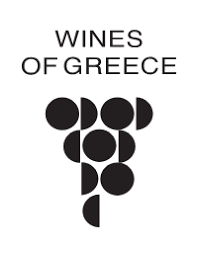High Altitude vineyards: the Greek antidote to climate change
If there is one natural ally for the Greek vineyard in the era of climate change, it is altitude. Greece is one of the few wine-producing countries with such extensive access to mountainous terroirs. Its vineyards don’t stretch over endless flatlands, but climb hillsides, highlands, and plateaus — and that makes all the difference.
For every 100 meters of elevation gain, the average temperature drops by approximately 0.6°C. In a country with hot summers, this natural cooling is invaluable: it slows down grape ripening, helps preserve acidity, and keeps potential alcohol levels in reasonable numbers.
PDO Mantinia (ΠΟΠ Μαντινεία), located on a plateau in the heart of the Peloponnese, is a prime example. With an average altitude of 660 meters, it is one of the latest-ripening viticultural zones in Greece. There, Moschofilero produces highly aromatic wines with lively acidity and energy. In the far north, PDO Amyndeon (ΠΟΠ Αμύνταιο), at altitudes between 520 and 720 meters, shapes one of the most vibrant and ethereal expressions of Xinomavro. Similarly, in PDO Zitsa (ΠΟΠ Ζίτσα) in Epirus, Debina ripens slowly, maintaining high acidity and delivering white elegant still and sparkling wines. Even in warmer zones such as PDO Nemea (ΠΟΠ Νεμέα), altitude makes a difference: in the upper parts of the appellation, where elevations reach up to 850 meters, Agiorgitiko ripens more gradually, gaining structure, finesse, and freshness.
But altitude is not the privilege of PDO zones alone. In Epirus, PGI Metsovo (ΠΓΕ Μέτσοβο) takes full advantage of its mountainous terrain, with vineyards reaching up to 1,000 meters. The result is wines with brightness, nerve, and aging potential. In Western Macedonia, PGI Siatista (ΠΓΕ Σιάτιστα),with elevation over 600 meters, delivers wines of finesse and balance. In the Peloponnese, PGI Slopes of Aigialia (ΠΓΕ Πλαγιές Αιγιαλείας) includes some of the highest vineyards in mainland Greece, exceeding 1,000 meters in elevation on steep, sea-facing slopes. Here, Roditis gains a distinctive energy and minerality that sets it apart.
Greek islands also offer mountainous terrain. In Samos, vineyards rise from sea level to 1,000 meters. On terraced slopes, Muscat Blanc à Petits Grains produces high-quality sweet wines under the PDO Samos (ΠΟΠ Σάμος) designation, known for their intensity and purity. In Kefalonia, PGI Slopes of Ainos (ΠΓΕ Πλαγιές Αίνου) climbs the flanks of Mount Ainos, producing crisp, balanced wines that fully benefit from the island’s microclimates and elevation, which reaches up to 800 meters.
Even in the southernmost part of the country, Crete, mountainous vineyards abound. In PDO Peza (ΠΟΠ Πεζά) (Heraklion), the highest plots reach 800 meters and are excellent terroir for white Vilana grapes. In PGI Rethimno, (ΠΓΕ Ρέθυμνο) villages like Fourfouras and Melampes host vineyards over 900 meters. On the eastern side, PDO Sitia (ΠΟΠ Σητεία) includes the high plateau of Ziros, where vineyards lie between 600 and 750 meters.
Altitude is not merely a geographical statistic. It’s a lever of quality, a natural cooling system, and a defense against overripeness. It allows Greek wines to retain precision, structure, and vibrancy — even as climatic conditions grow more unpredictable. In a changing world, it may well be the most stable and essential asset of the Greek vineyard.

